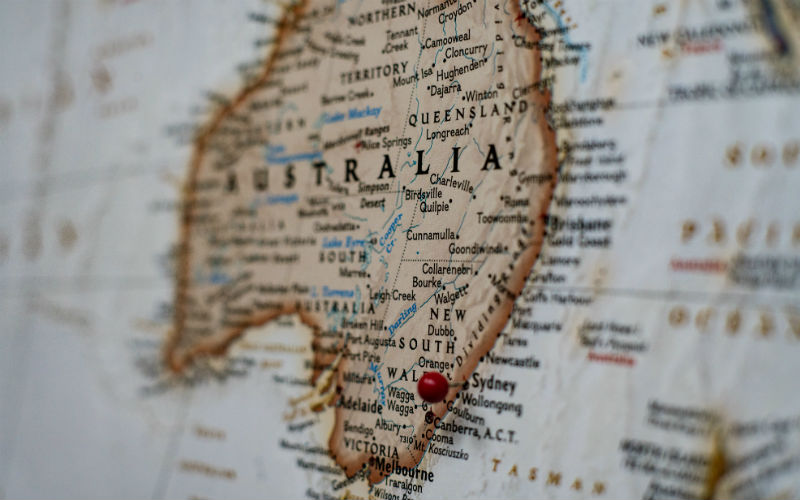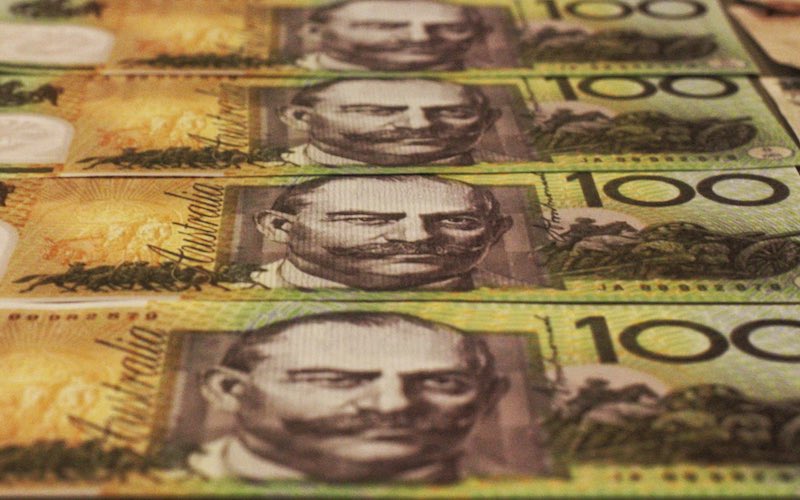From home loans to HECS debts to payday loans, Aussies have become prolific borrowers. According to the Bank for International Settlements, aggregate household debt in 1974 was equivalent to about a third of Australia’s gross domestic product (GDP). As of 2024, the total amount owed by Aussie households exceeds 110% of GDP. Australia used to be one of the most conservative developed nations when it comes to debt, but now has one of the highest national debt-to-income ratios.
Regardless of whether you think this is a good or a bad thing, you might be curious about how this looks on a micro level. We’ve gathered some of the most recent data to try and estimate how much the average Aussie owes his or her creditors.
Average outstanding debts
The ABS includes average liability per Australian household in the Distribution of Household Income, Consumption and Wealth series. In 2021/22, average household liability was estimated at around $276,000, a 7.4% rise from the previous financial year. In the 2021 census, there were about 9.275 million households in Australia, suggesting household debts total just under $2.6 trillion.
This data is useful on a macro level, but doesn’t completely account for the fact that many Aussies have no debts at all. The 2024 InfoChoice State of Aussies' Savings Survey asked 1,000 Australian adults how much outstanding debt they had. Here are the results, by generation:
| All respondents | Baby Boomer (Born 1946 - 1964) | Gen X (Born 1965 - 1980) | Millennial (Born 1981 - 1996) | Gen Z (Born 1997 - 2012) | |
|---|---|---|---|---|---|
| $0 | 35.9% | 44.9% | 32.9% | 28.2% | 46.8% |
| $1 - $999 | 4.1% | 9.2% | 3.5% | 2.3% | 3.7% |
| $1,000 - $9,999 | 8.8% | 10.3% | 8.5% | 6.7% | 11.7% |
| $10,000 - $49,999 | 11.9% | 9.2% | 10.1% | 11.4% | 18.1% |
| $50,000 - $249,999 | 10.2% | 15.1% | 12.0% | 8.5% | 6.4% |
| $250,000 - $499,999 | 14.2% | 5.9% | 16.7% | 20.2% | 6.4% |
| $500,000 - $999,999 | 12.5% | 3.2% | 12.4% | 19.9% | 6.4% |
| $1,000,000 and over | 2.5% | 2.2% | 3.9% | 2.6% | 0.5% |
Source: InfoChoice State of Aussies' Savings Survey, July 2024
As touched on previously, more than a third (35.9%) of Australian adults have no debt whatsoever. Unsurprisingly, this is more common among Boomers and Gen Z - many older people have already paid off their home loan entirely, while younger Aussies have not yet taken out any loans.
So, if we assume that this ratio was roughly the same in 2021/22 (which is a big assumption, this is just for illustrative purposes), that would mean households with at least some debt owed on average about $431,000, based on the ABS estimate.
Debt relative to income
Of course, the dollar value of a person's debts is only part of the picture. It’s very different to owe $500,000 when you earn an annual salary of $200,000 compared to someone who earns $60,000.
Debt-to-income ratio (DTI) measures how large someone’s debts are relative to their annual income. Many lenders have limits on DTI - for example, any home loan application at CommBank where the loan will push a borrower's total outstanding debts beyond seven times their annual salary needs to be manually approved by the credit department.
According to the ABS, this was the breakdown in 2021/22 for the amount of debt held by Aussies in different income brackets:
| Average gross disposable income | Average outstanding liabilities | Average debt to income ratio | |
|---|---|---|---|
| Lowest income quartile | $54,000 | $124,000 | 2.3 |
| Second income quartile | $87,000 | $145,000 | 1.7 |
| Third income quartile | $117,000 | $237,000 | 2.0 |
| Fourth income quartile | $154,000 | $343,000 | 2.2 |
| Highest income quartile | $288,000 | $544,000 | 1.8 |
Source: Australian Bureau of Statistics - Australian National Accounts: Distribution of Household Income, Consumption and Wealth
In general, Australian people don’t seem to make a habit of borrowing beyond their means. Perhaps this is somewhat attributable to responsible lending standards.
What is the debt?
The InfoChoice survey also asked respondents what form of debt they held. As you might expect, a home loan was most common, with 61.5% of those with debt having an outstanding mortgage, followed by credit cards (43.3%), a car loan (23.6%), and an education loan like HECS (22.2%).
Please note that the below data does not mean 61.5% of the average Aussies' debts are in home loans, just that 61.5% of respondents have an outstanding home loan. Since mortgages are typically a lot larger than the other forms of debt listed, in reality, it would likely be a much greater proportion of overall debt.
Here are the results by gender:
| Total | Male | Female | |
|---|---|---|---|
| Home Loan | 61.9% | 67.1% | 56.3% |
| Car Loan | 23.9% | 26.2% | 21.5% |
| Personal Loan | 16.0% | 16.8% | 15.2% |
| Education Loan (e.g., HECS-HELP) | 22.5% | 16.1% | 29.6% |
| Credit Card | 43.6% | 44.0% | 43.3% |
| Buy Now, Pay Later | 19.9% | 15.4% | 24.4% |
| Payday Loan | 1.1% | 1.7% | 0.4% |
| Margin Loan | 0.9% | 1.3% | 0.4% |
| Family Loan | 1.8% | 1.3% | 2.2% |
Source: InfoChoice State of Aussies' Savings Survey, July 2024
And by generation:
| Overall % | Baby Boomer (Born 1946 - 1964) | Gen X (Born 1965 - 1980) | Millennial (Born 1981 - 1996) | Gen Z (Born 1997 - 2012) | |
|---|---|---|---|---|---|
| Home Loan | 61.9% | 61.6% | 67.7% | 69.0% | 28.7% |
| Car Loan | 23.9% | 8.1% | 27.7% | 27.0% | 23.8% |
| Personal Loan | 16.0% | 8.1% | 14.2% | 21.0% | 12.5% |
| Education Loan (e.g., HECS-HELP) | 22.5% | 1.2% | 8.4% | 25.4% | 63.7% |
| Credit Card | 43.6% | 43.0% | 52.3% | 48.0% | 13.8% |
| Buy Now, Pay Later | 19.9% | 17.4% | 12.9% | 23.0% | 26.3% |
| Payday Loan | 1.1% | 0.0% | 0.6% | 1.6% | 1.3% |
| Margin Loan | 0.9% | 3.5% | 1.3% | 0.0% | 0.0% |
| Family Loan | 1.8% | 0.0% | 1.9% | 2.4% | 1.3% |
Source: InfoChoice State of Aussies' Savings Survey, July 2024
Balance of outstanding loans
The NAB Australian Wellbeing Survey for Q4 '23 asked respondents to estimate the total outstanding amount they owed on various types of debt. This was the average breakdown by gender:
| Type of Loan | Overall | Men | Women |
|---|---|---|---|
| Home loan | $293,705 | $277,351 | $310,754 |
| Investment loans | $201,929 | $194,364 | $216,205 |
| Personal loan | $10,925 | $10,233 | $11,525 |
| Loan from family & friends | $3,937 | $3,051 | $4,685 |
| Credit card | $3,344 | $3,463 | $3,210 |
| Payday loan | $751 | $613 | $1,029 |
| Buy Now Pay Later | $686 | $623 | $740 |
Source: NAB Australian Wellbeing Survey, Q4 '23
And by age:
| Type of Loan | Aged 18-29 | Aged 30-49 | Aged 50-64 | Aged 65+ |
|---|---|---|---|---|
| Home loan | $301,201 | $340,071 | $264,247 | $135,506 |
| Investment loans | $67,431 | $223,515 | $322,172 | $106,455 |
| Personal loan | $9,538 | $12,639 | $9,479 | $11,383 |
| Loan from family & friends | $3,487 | $5,098 | $2,444 | $4,584 |
| Credit card | $2,941 | $3,816 | $4,054 | $2,422 |
| Payday loan | $997 | $685 | $716 | $250 |
| Buy Now Pay Later | $538 | $824 | $687 | $553 |
Source: NAB Australian Wellbeing Survey, Q4 '23
And finally by income:
| Type of Loan | Lower income earners | Higher income earners |
|---|---|---|
| Home loan | $140,149 | $335,865 |
| Investment loans | $119,667 | $267,424 |
| Personal loan | $5,943 | $14,298 |
| Loan from family & friends | $3,273 | $5,606 |
| Credit card | $2,469 | $4,152 |
| Payday loan | $413 | $678 |
| Buy Now Pay Later | $681 | $749 |
Source: NAB Australian Wellbeing Survey, Q4 '23
How to manage debts
Mounting debts can be overwhelming, especially if you have several different creditors. If you're struggling, there are a few possible strategies that might alleviate some of the pressure you're feeling.
Debt consolidation loan
Some people who are paying off several debts simultaneously choose to combine them all into one big loan, known as a 'debt consolidation loan'. Basically, you take out a new loan, large enough to cover all that's outstanding, use this money to pay off all your current debtors, then just pay off the new loan. This can be helpful if you're becoming overwhelmed with having to deal with several different products at once. If you can find a lower interest rate on your debt consolidation loan, it might also save you money.
For those who have a home loan, it can be a great strategy to roll all your other debts into your home loan. Since home loan rates are typically lower than those on products like personal loans or credit cards, this can lower your overall interest rate.
Read more: Debt consolidation loans
Debt management strategies
There are a couple of popular game plans to tackle mounting debts. The snowball method means making minimum repayments on all your outstanding loans except for the smallest, into which you put all your available spare money until it's paid off. You then move on to the next smallest, and so on. There can be a psychological advantage to doing this, since you build momentum with little wins at the start, which can give you confidence that you will eventually dig your way out of the hole you're in. An alternative is the avalanche method, where you instead pay off the debt with the highest interest rate and work down. While this might be more challenging, it could also save you money in the long run, since you eliminate the sums accruing higher rates of interest.
Change your spending habits
While this might not be much use after the fact, it's probably sensible to have a think about how you ended up with overwhelming debts in the first place. Many people end up in a tough situation through no fault of their own, but if you're looking at large credit card bills that you mostly spent on shoes and alcohol, it might be time to take a look at how much you're spending. You might find that through budgeting, and maybe some small sacrifices, it becomes easier to manage your finances.
Read more: 60 ways to save money
Get support
Like most things, it is normally better not to struggle with your debts in silence. The national debt helpline (1800 007 007) is available Monday to Friday, 9.30am to 4.30pm, and offers free and confidential financial counselling. You might be able to get a better picture of the best route forward for your situation.
Picture by Alice Pasqual on Unsplash



 Denise Raward
Denise Raward
 Harrison Astbury
Harrison Astbury










